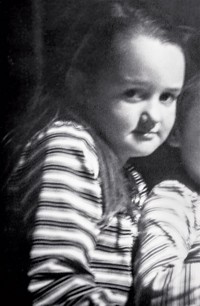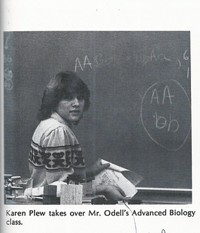Advertisement
Grab your lab coat. Let's get started
Welcome!
Welcome!
Create an account below to get 6 C&EN articles per month, receive newsletters and more - all free.
It seems this is your first time logging in online. Please enter the following information to continue.
As an ACS member you automatically get access to this site. All we need is few more details to create your reading experience.
Not you? Sign in with a different account.
Not you? Sign in with a different account.
ERROR 1
ERROR 1
ERROR 2
ERROR 2
ERROR 2
ERROR 2
ERROR 2
Password and Confirm password must match.
If you have an ACS member number, please enter it here so we can link this account to your membership. (optional)
ERROR 2
ACS values your privacy. By submitting your information, you are gaining access to C&EN and subscribing to our weekly newsletter. We use the information you provide to make your reading experience better, and we will never sell your data to third party members.
Education
Career Ladder
Career Ladder: Angela Hoffman
Self-reliance and an unlikely start in teaching helped make Sister Angela Hoffman a standout educator
by Alexandra A. Taylor
October 3, 2016
| A version of this story appeared in
Volume 94, Issue 39
1947
Helping out at home
Angela Hoffman’s family lived below the poverty level and worked odd jobs while she was growing up in Lacey, Wash. Her parents decided that she and her six siblings needed to know how to do everything around the house, which came in handy later in her life. “The girls had to learn how to fix things—how to maintain stuff in the house, how to fix the lawn mower—and the boys had to learn how to cook and sew.”
1968
Going where she’s needed
Hoffman became a nun when she joined the Order of Saint Benedict after high school. She wanted to study science, but a career counselor told her, “Science is for men. You’d be working all by yourself in a lab somewhere, and you wouldn’t like that.” Her order was running some schools, so she started teaching second grade instead. “That wasn’t really my passion, but I did it because they needed me to do it.”
1980
Science passion taking over
Her order eventually recognized that she wasn’t thriving and allowed her to pursue science. She completed a bachelor’s in biology in one year and got a position teaching at Saint Martin’s University. Hoffman was teaching general chemistry and education when the organic chemistry teacher quit, and she was offered his position. She hadn’t studied organic chemistry in three years but thought, “Sure, if you’re dumb enough to hire me, I’ll give it a shot!”
1983
Learning by doing

After two years, Hoffman’s desire to be more qualified drove her to pursue a doctorate in biochemistry. She enrolled at the Oregon Graduate Center, where she was one of five Ph.D. candidates studying chemistry and the only student in her lab. “The good thing about it was that no one was going to hold your hand. You had to read the manual.” After earning her Ph.D., Hoffman began work at the University of Portland, an undergraduate institution where she’s stayed for 28 years. She started a lab that primarily studies natural products, such as the chemotherapeutic compound paclitaxel.
Today
Nurturing young researchers
Hoffman currently employs 14 undergraduates in her lab and sometimes hires high school students as well. “These folks go off and get really good graduate positions, because they know how to do research.” She has remained with her order and credits her early teacher training with her success. “If they hadn’t needed a second-grade teacher, I probably would not have gotten my education degree or my interest in teaching. But I think the way it happened was the right way.”
Know a chemist with an interesting career path? Tell C&EN about it at cenm.ag/careerladder.
Check C&ENJobs for the latest job listings, as well as featured videos on what chemists do.







Join the conversation
Contact the reporter
Submit a Letter to the Editor for publication
Engage with us on Twitter